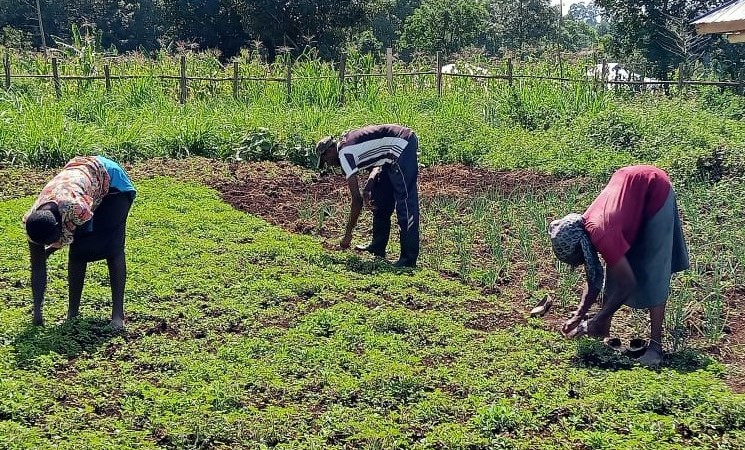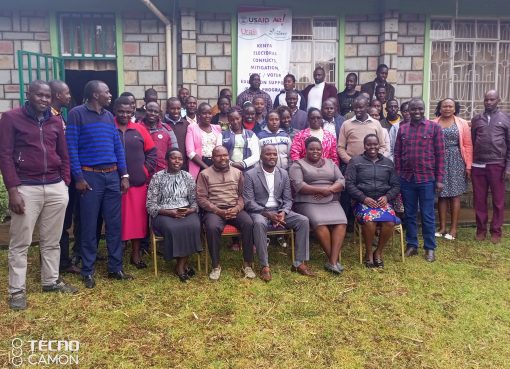Traditional African vegetables in Kenya are mainly grown for subsistence farming and occupy a small portion of the farm.
These vegetables are often intercropped and have the ability to improve nutrition and sustain the livelihoods of families without any significant surplus for sale.
Contrary to that, a section of women in Kenyenya sub county, Kisii are utilizing their resources to grow and supply some of the sought after traditional vegetables among residents including managu (African nightshade), sagaa (spider plant) and kunde (cowpeas).
Teresa Moraa is one of the farmers in Kenyenya who meets her daily needs through growing and selling traditional vegetables in the region. In her quarter acre farm, Moraa says she mainly grows managu and sagaa for commercial purposes in addition to kales and maize.
“I prefer growing the traditional vegetables to other crops in my farm because the vegetables usually grow within a cycle of two to three weeks and I can get income from the sales within a very short time,” she notes.
During the dry season, the vegetable farmer points out that she maximizes the opportunity to grow the vegetables and earn additional income since many farmers opt against watering them.
Moraa adds she mainly uses composite manure to boost soil fertility in her farm as she cannot afford the high cost of fertilizers.
She says that during the rainy season, she earns about Sh. 2000 per sack because the supply of traditional vegetables is much higher whereas in dry seasons, she takes home between Sh. 5000 to Sh. 6000 per sack.
The vegetable farmer notes she sells her vegetables in Kenyenya and Riokindo markets and in some instances, supplies the vegetables to a nearby secondary school.
In addition to the high cost of fertilizers, Moraa says she faces other challenges such as pests and diseases affecting the vegetables as well as heavy rains that bury the crops into the soil.
Perris Sarange, another farmer from the same sub county, reveals that she grows managu, sagaa and kunde alongside other crops in her farm.
She notes that traditional vegetable farming has been her major source of income in her half an acre farm for the last 20 years due to its fast returns.
The vegetable farmer says she uses the Di-Ammonium Phosphate (DAP) fertilizer during the planting of the vegetable seedlings and later on applies compost manure to the growing seedlings to boost their healthy growth.
“After harvesting kunde, I grow it in a different piece of land as it ensures a good harvest. Sagaa and managu, however, can be regrown in the same plot of land as before since it does not affect the quantity of harvest,” Sarange reveals.
Similar to Moraa, she notes that attacks by pests on her vegetables and birds eating the leaves of the vegetables are among the challenges that she faces in her traditional vegetable farming venture.
The vegetable farmer urges farmers to take care of their growing crops, from germination to harvesting, in order to realize a better yield.
Sarange says she sells her vegetables at Riokindo Market twice a week where she has a readily available market. During her best-selling seasons, she earns up to Sh. 400 for a bucket of traditional vegetables.
Earlier this year, the United Nations Educational, Scientific and Cultural Organization (UNESCO) listed several Kenyan vegetables as protected plant species including managu (African nightshade), mrenda (jute plant), terere (pigweed) and kunde (cowpeas).
The listing is expected to promote Kenyan traditional vegetables as healthy and nutritious meals both locally and internationally.
By Kelvin Ogachi and Mercy Osongo




